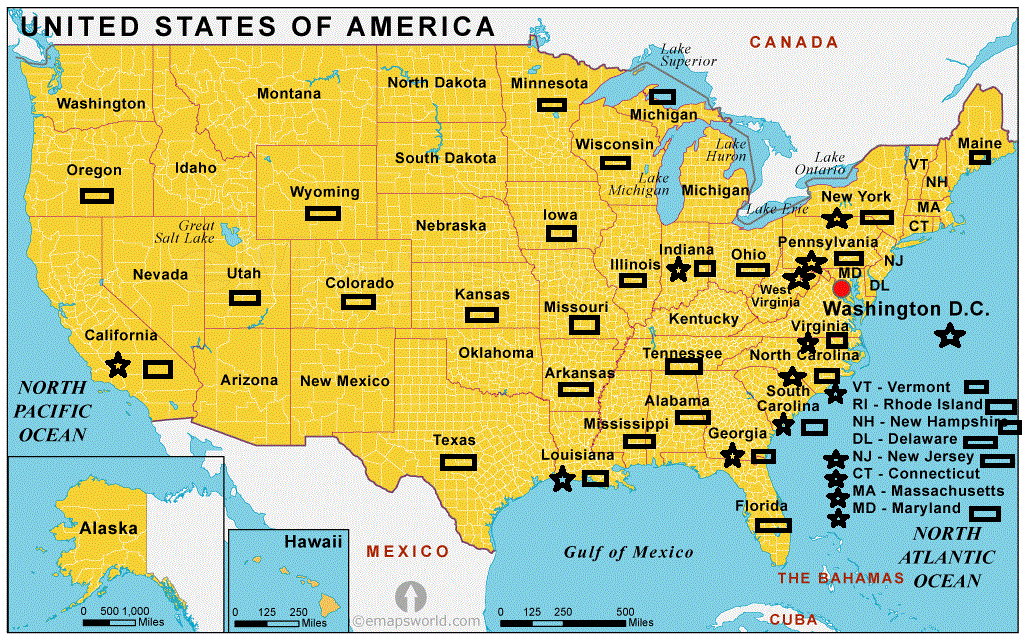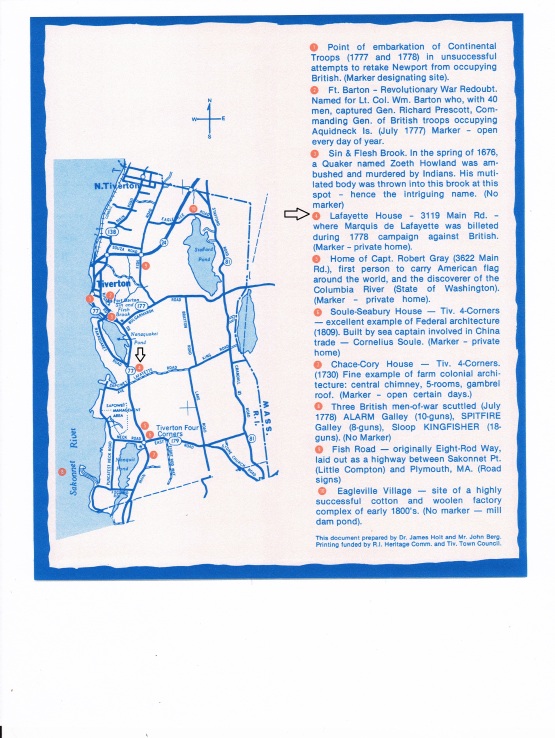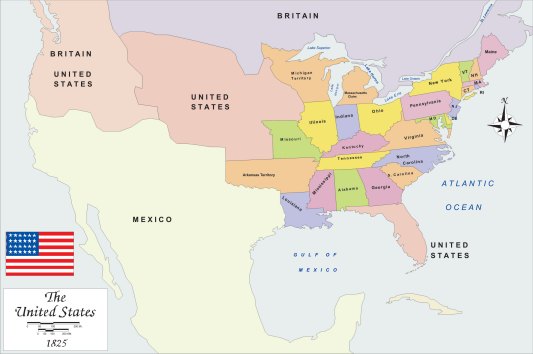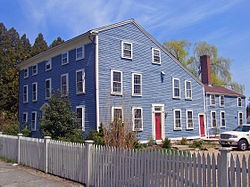The state joined the union on May 29, 1790 – State No 13/13
https://en.wikipedia.org/wiki/Rhode_Island
Capital: Providence, RI
https://en.wikipedia.org/wiki/Providence,_Rhode_Island

TOPIC I (T1) – OUTDOOR SCULPTURES IN RHODE ISLAND
Statues, Busts, Monuments, Memorials… Historic Parks and Places…
(No outdoor sculptures found)
TOPIC II (T2) – MANY PLACES…
Town, city, village, county, township … may refer or are named for
General Gilbert du Motier, marquis de La Fayette or La Grange, « Home » of Lafayette
Lafayette Village, a historic district in North Kingstown, RI (NRHP)
TOPIC III (T3) – STREETS, ROADS, SQUARES…
Parks, places, sites …
Providence, RI – State Capital
(No street named for Lafayette found)
Barrington, RI
https://en.wikipedia.org/wiki/Barrington,_Rhode_Island
– Lafayette Rd.
Johnston, RI
https://en.wikipedia.org/wiki/Johnston,_Rhode_Island
– Lafayette St.
North Kingstown, RI
https://en.wikipedia.org/wiki/North_Kingstown,_Rhode_Island
– Lafayette Rd.
Pawtucket, RI
https://en.wikipedia.org/wiki/Pawtucket,_Rhode_Island
– Lafayette St.
Tiverton, RI
https://en.wikipedia.org/wiki/Tiverton,_Rhode_Island
– Lafayette Rd.
West Warwick, RI
https://en.wikipedia.org/wiki/West_Warwick,_Rhode_Island
– Lafayette St.
Wickford, RI
https://en.wikipedia.org/wiki/Wickford,_Rhode_Island
– Lafayette Rd.
TOPIC IV (T4) – INDOOR OBJECTS, MUSEUMS …
Pictures, busts, Exhibitions …
(No information found)
TOPIC V (T5) – LAFAYETTE AND FRANCE
THROUGHOUT THE COURSE OF THE AMERICAN REVOLUTION
They played a key role in the American Revolution (1765-1783)
and during the American Revolutionary War (1775–1783)
Between 1778 and 1783,
44 177 French soldiers and sailors fought aside the “American Insurgents”,
5 040 gave their lives for their independence.
Between 1776 and 1783, France spent 1.3 billion French pounds. A huge debt for the time that drained the Treasure of the Kingdom.
Road markers, places, objects…

The 13 English colonies
The 13 states involved: Connecticut, Delaware, Georgia, Maryland, Massachusetts (South and North), New Hampshire, New Jersey, New York, North Carolina, Pennsylvania, Rhode Island, South Carolina, Virginia.
LAFAYETTE INVOLVEMENT DURING THE AMERICAN REVOLUTIONARY WAR
He enlisted as a volunteer without pay alongside the « Insurgents » of the 13 English colonies in America who declared independence unilaterally July 4, 1776

- Marquis de Lafayette as a Major General of Continental Army in 1779.
Portrait by Charles Willson Peale
* Lafayette: First military campaign: from June 1777 to January 1779
Bristol, RI
https://en.wikipedia.org/wiki/Bristol,_Rhode_Island
Joseph Reynolds House: Marquis de Lafayette occupied the north parlor chamber.
From September 7 to 23, 1778, Lafayette, a general in the Continental Army, was responsible for the defense of Bristol and Warren during failed military operations to drive the British from occupied Newport. The Joseph Reynolds House, also known as « Willowmere », is a historic house at 950 Hope Street (RI 114) in Bristol, Rhode Island. Built c. 1698–1700, the three-story wood-frame house is one of the oldest buildings in Bristol. It is the oldest known three-story building in RI
Tiverton, RI – downtown
https://en.wikipedia.org/wiki/Tiverton,_Rhode_Island
“Lafayette House” 3119 Main Road, where Marquis de La Fayette was Billeted during 1778 campaign against British (private house)
(http://www.tiverton.ri.gov/documents/generaldocs/Historic%20Sites%20Map.pdf)
Tiverton, RI – Downtown

Image of General Marquis de Lafayette headquarters located in Tiverton, R.I.
During the American Revolution, the British held Aquidneck Island and Tiverton became an asylum for Americans fleeing the British oppression. The famous French General Marquis de Lafayette briefly used a house just north of Four Corners as his headquarters.
http://sos.ri.gov/virtualarchives/items/show/31
* Lafayette: Back in France to plead the cause of the “Insurgents”: from February 1779 to March 1780
* Lafayette: Second military campaign: from April 1780 to December 1781
Pawtucket, RI – 1780
https://en.wikipedia.org/wiki/Pawtucket,_Rhode_Island
French support, 6,000 troops under the command of General Jean Baptist de Vimeur, Comte de Rochambeau arriving in Newport Lafayette returned to Rhode Island to rendezvous with Rochambeau.

“Pidge Tavern” (view from the southwest as restored 1940)
Marquis de Lafayette resided at the tavern for several weeks in 1780.
Today: 586 Pawtucket Avenue, Pawtucket, Providence County, RI
FRANCE INVOLVEMENT DURING THE AMERICAN REVOLUTION
Louis XVI – King of France and Navarre
1768-1777 – France secretly helps the American Insurgents
1768: Baron de Kalb a Bavarian-born French military, traveled to America on a covert mission (to determine the level of discontent among colonists) on behalf of France.
1775-1776-1777: France secretly sent military supplies. During these three years, France sent secretly to the American rebels over five million French pounds “livres Tournoises” of aid.
1778-1782 – France officially and fully aids the American Insurgents
1778 (February) – Franco American Treaty
(Later Spain (in 1779) and Dutch (in 1780) became allies of France)
*1778-1779 – 1st “French Expedition” under Comte d’Estaing
*1780-1781-1782- 2nd “French Expedition” under Comte de Rochambeau
*1781- The French Navy under Comte de Grasse joins the Franco-American ground Forces in Yorktown, VA
TOPIC VI (T6) – LAFAYETTE VISIT (August 4 to December 22, 1784)
Road markers, places, objects…

The United States 1783-1803
In 1784, Lafayette visited America, where he enjoyed an enthusiastic welcome; he visited all the 13 states except Georgia.
TOPIC VII (T7) – LAFAYETTE’S FAREWELL TOUR (1824-1825)
Road markers, places, objects…

The United States in 1825
The 24 states visited : Alabama, Connecticut, Delaware, Georgia, Illinois, Indiana, Kentucky, Louisiana, Maine (ex-Massachusetts / North part), Maryland, Massachusetts, Mississippi, Missouri, New Hampshire, New Jersey, New York, North Carolina, Ohio, Pennsylvania, Rhode Island, South Carolina, Tennessee, Vermont, Virginia. Plus Washington D.C.

Detailed Timeline
Lafayette visited New England: Massachusetts, Rhode Island, Maine, New Hampshire, Vermont, and Connecticut twice,
spending a month all told in the region.
The First New England Visit (From August 20 to September 04, 1824)
From August 21 to August 24. Heading north from Staten Island, NY he stopped briefly in New Haven, Conn., Providence, R.I., Stoughton, Mass., and Boston, Mass.
Providence, R.I.
https://en.wikipedia.org/wiki/Providence,_Rhode_Island
On August 25 He arrived in Cambridge, Mass.
On August 26 he stopped in five Massachusetts cities and towns: Lexington, Concord, Salem, Marblehead, and Newburyport and settled into the Boston area until August 31. (During that time he visited former President John Adams in Quincy, Mass.)
On September 1, he visited Portsmouth, N.H., then headed south again to Boston and Lexington.
On Sept. 3. Worcester, Mass., and Tolland, Conn., were on his agenda
On Sept. 4, Hartford and Middletown, Conn. were on his agenda
He then visited familiar places: Philadelphia, Delaware, Virginia. He spent some time in the new capital, Washington, D.C. then south to Maryland, the Carolinas, and Georgia. He turned west to see the new states of Alabama, Mississippi, and Louisiana, then up the Mississippi River in a steamboat to Missouri, Tennessee, Kentucky, Illinois, Indiana, and Ohio. Then he traveled back through Pennsylvania to New York, where he saw Niagara Falls and went to Albany by way of the Erie Canal. From Albany, he traveled straight to Boston.
Second New England Visit (From June 17 to June 29, 1825)
On June 17, 1825, Lafayette began his second New England tour by laying the cornerstone of the Bunker Hill Monument – Boston Mass
On June 23, He spent the night in Dover, N.H. That night, a delegation of citizens from South Berwick, Maine, invited him to breakfast. He accepted. Then he visited Biddeford and Portland.
On June 27, he arrived late at night in Claremont, N.H.
On June 28, Early in the day, he crossed over the Cornish Bridge to Vermont, passing through Woodstock late in the morning, then took a stagecoach over the mountains to Barnard and Royalton, Randolph and Barre. He spends the night in Montpelier at The Pavilion.
On Wednesday, June 29, 1825, he left Montpelier for Burlington, his last stop in New England.
On June 29, 1825, he traveled overnight south on Lake Champlain past Mount Independence on the steamboat Phoenix II and arrived Whitehall, New York June 30, 1825


